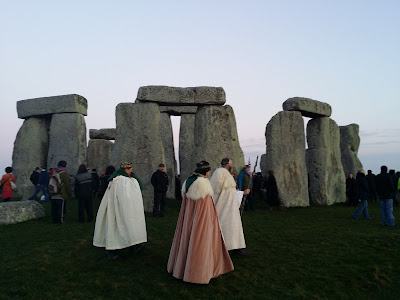THE equinox is celebrated around the world and marks the start of spring. But what is it?
 |
| Pagans, revellers and druids greet the sun at Stonehenge |
When is the equinox?
The spring equinox, also known as the vernal equinox, is set to take place on Sunday March 20 2016.
The date marks the official start of spring, according to an astronomical calendar based on the Earth's orbit of the sun.
Another equinox in September marks the start of autumn as the nights become longer than the days.
What is the equinox?
The equinox is an astronomical event in which the sun crosses the celestial equator - the projection of the Earth's equator into space.
On the date of the equinox, both day and night are around the same length around the globe. Afterwards, the day is longer than the night.
The word equinox is derived from the Latin equi, which means equal, and nox, which means night.
How is the equinox celebrated?
Druids and pagans mark the equinox by gathering to greet the sun at the ancient stone circle of Stonehenge in Wiltshire.
The equinox is a significant solar festival in the pagan calendar and is associated with fertility and renewal.
It also helps mark Easter, Passover and the Persian new year known as Nowruz.
What is the equilux?
On the date of the equinox itself, the length of day and night are only nearly equal.
The equilux is the date when day and night are exactly equal and took place on Thursday March 17 2016.
It always occurs a few days before the spring equinox and a few days after the autumn equinox.
When do the clocks go forward?
Britain's clocks will go forward at 1am on the last Sunday of this month, March 27.
The changing of the clocks means an hour less in bed. It marks the start of more the daylight in the evenings, but less in the mornings.
By ALICE FOSTER
Full story in the Daily Express
If you wish to visit Stonehenge at Sunrise on the Spring Equinox and do not have tranport. Solstice Events U.K are offerimg their usual transport / tour service from London and Bath.
The Stonehege Tourist Guide

